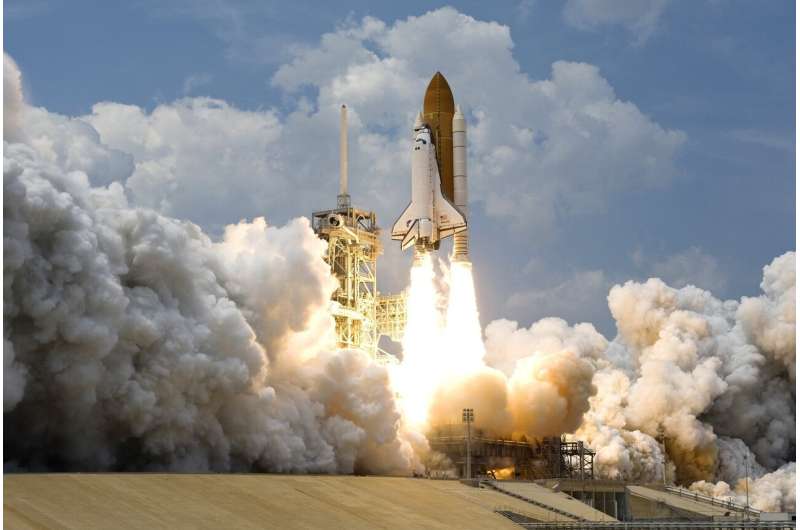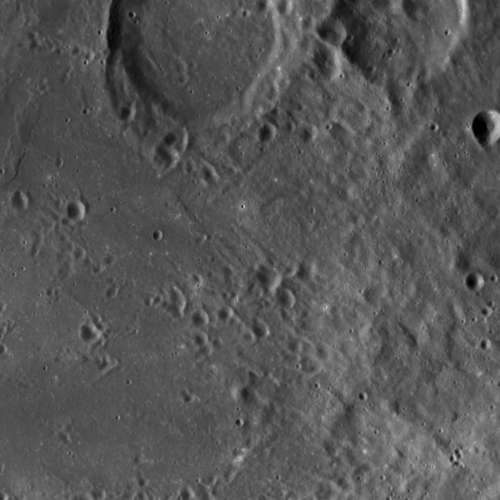Marlink launches customizable Starlink LEO data plans for hybrid networks
Thursday, 22 August 2024 19:46 Marlink, a prominent provider of managed business-critical ICT services, has introduced new customizable Starlink LEO internet plans as part of its hybrid network offerings. These plans cater to a wide range of industries, including maritime, onshore and offshore energy, enterprise, and leisure boating, with data packages ranging from 10GB to unlimited.
Customers can now tailor their Starl
Marlink, a prominent provider of managed business-critical ICT services, has introduced new customizable Starlink LEO internet plans as part of its hybrid network offerings. These plans cater to a wide range of industries, including maritime, onshore and offshore energy, enterprise, and leisure boating, with data packages ranging from 10GB to unlimited.
Customers can now tailor their Starl Voyager Space joins Spaceport Nova Scotia development as key technical partner
Thursday, 22 August 2024 17:36 Maritime Launch Services (Cboe CA: MAXQ, OTCQB: MAXQF) has announced the selection of Voyager Space (Voyager) as the first Owner Authorized Representative (OAR) for the next phase of Spaceport Nova Scotia's development. Voyager will provide technical support for the launch facility's infrastructure.
This partnership underscores the growing collaboration between Canada and the United States
Maritime Launch Services (Cboe CA: MAXQ, OTCQB: MAXQF) has announced the selection of Voyager Space (Voyager) as the first Owner Authorized Representative (OAR) for the next phase of Spaceport Nova Scotia's development. Voyager will provide technical support for the launch facility's infrastructure.
This partnership underscores the growing collaboration between Canada and the United States Mars and Lunar propellant production plans face complexity challenges
Thursday, 22 August 2024 17:36 NASA's ongoing efforts to develop in situ propellant production (ISPP) technologies for the Moon and Mars involve a balance between complex engineering and practical execution. These technologies, which aim to generate fuel on the lunar and Martian surfaces using local resources, could reduce the need to transport propellants from Earth, but present significant challenges in both design and powe
NASA's ongoing efforts to develop in situ propellant production (ISPP) technologies for the Moon and Mars involve a balance between complex engineering and practical execution. These technologies, which aim to generate fuel on the lunar and Martian surfaces using local resources, could reduce the need to transport propellants from Earth, but present significant challenges in both design and powe New Antimatter Nucleus Discovery Sets Heaviest Record Yet
Thursday, 22 August 2024 17:36 Scientists at the Relativistic Heavy Ion Collider (RHIC) have identified the heaviest antimatter nucleus ever observed. This exotic antinucleus, named antihyperhydrogen-4, is composed of four antimatter particles: an antiproton, two antineutrons, and an antihyperon. The discovery comes from an analysis of six billion particle collisions performed at RHIC, a facility designed to recreate conditio
Scientists at the Relativistic Heavy Ion Collider (RHIC) have identified the heaviest antimatter nucleus ever observed. This exotic antinucleus, named antihyperhydrogen-4, is composed of four antimatter particles: an antiproton, two antineutrons, and an antihyperon. The discovery comes from an analysis of six billion particle collisions performed at RHIC, a facility designed to recreate conditio The evolution of the Trappist-1 planetary system
Thursday, 22 August 2024 17:36 Planets are bodies that orbit a star and have sufficient gravitational mass that they form themselves into roughly spherical shapes that, in turn, exert gravitational force on smaller objects around them, such as asteroids and moons. For most of human history, the only planets our ancestors knew of were those they could see in the night sky. But in the last 30 years, telescopes sensitive enough
Planets are bodies that orbit a star and have sufficient gravitational mass that they form themselves into roughly spherical shapes that, in turn, exert gravitational force on smaller objects around them, such as asteroids and moons. For most of human history, the only planets our ancestors knew of were those they could see in the night sky. But in the last 30 years, telescopes sensitive enough Citizen scientists confirm new warm Jovian-class exoplanet
Thursday, 22 August 2024 17:36 Two teams of dedicated amateur astronomers, supported by NASA, have successfully confirmed the existence of a new exoplanet, a "warm Jupiter," using their backyard telescopes.
The teams, known as UNITE (UNISTELLAR Network Investigating TESS Exoplanets) and Exoplanet Watch, combined their efforts to validate the discovery of this exoplanet, which is now designated as TIC 393818343 b (also k
Two teams of dedicated amateur astronomers, supported by NASA, have successfully confirmed the existence of a new exoplanet, a "warm Jupiter," using their backyard telescopes.
The teams, known as UNITE (UNISTELLAR Network Investigating TESS Exoplanets) and Exoplanet Watch, combined their efforts to validate the discovery of this exoplanet, which is now designated as TIC 393818343 b (also k Polaris Revealed to Have Spotted Surface in New Detailed Observations
Thursday, 22 August 2024 17:36 New research conducted with Georgia State University's Center for High Angular Resolution Astronomy (CHARA) Array has unveiled intricate details about the North Star, Polaris, including a spotted surface. The findings have been published in *The Astrophysical Journal*.
Polaris, the star marking the direction of Earth's North Pole, is renowned not only as a navigation beacon but also as a s
New research conducted with Georgia State University's Center for High Angular Resolution Astronomy (CHARA) Array has unveiled intricate details about the North Star, Polaris, including a spotted surface. The findings have been published in *The Astrophysical Journal*.
Polaris, the star marking the direction of Earth's North Pole, is renowned not only as a navigation beacon but also as a s UAE's first SAR satellite launched by Bayanat and Yahsat
Thursday, 22 August 2024 17:36 Bayanat AI PLC (ADX: BAYANAT), a leader in AI-powered geospatial solutions, and Al Yah Satellite Communications Company PJSC (ADX: Yahsat), the UAE's premier satellite services provider, have successfully launched the nation's first Low Earth Orbit (LEO) Synthetic Aperture Radar (SAR) satellite. The launch took place on August 16, 2024, in collaboration with ICEYE, a frontrunner in SAR satellite
Bayanat AI PLC (ADX: BAYANAT), a leader in AI-powered geospatial solutions, and Al Yah Satellite Communications Company PJSC (ADX: Yahsat), the UAE's premier satellite services provider, have successfully launched the nation's first Low Earth Orbit (LEO) Synthetic Aperture Radar (SAR) satellite. The launch took place on August 16, 2024, in collaboration with ICEYE, a frontrunner in SAR satellite Milky Way navigation in dung beetles inspires advanced drone and satellite systems
Thursday, 22 August 2024 17:36 An insect that has been navigating using the Milky Way for 130 million years is now inspiring innovations in drone, robot, and satellite navigation systems.
The dung beetle, known for its unique ability to steer using the stars, was identified in 2013 as the first species to utilize the Milky Way for nocturnal navigation. Swedish researchers made this discovery, observing that the beetles
An insect that has been navigating using the Milky Way for 130 million years is now inspiring innovations in drone, robot, and satellite navigation systems.
The dung beetle, known for its unique ability to steer using the stars, was identified in 2013 as the first species to utilize the Milky Way for nocturnal navigation. Swedish researchers made this discovery, observing that the beetles How students learn to fly NASA's IXPE spacecraft
Thursday, 22 August 2024 17:36 The large wall monitor displaying a countdown shows 17 seconds when Amelia "Mia" De Herrera-Schnering tells her teammates "We have AOS," meaning "acquisition of signal."
"Copy that, thank you," Alexander Pichler replies. The two are now in contact with NASA's IXPE (Imaging X-Ray Polarimeter Explorer) spacecraft, transmitting science data from IXPE to a ground station and making sure the do
The large wall monitor displaying a countdown shows 17 seconds when Amelia "Mia" De Herrera-Schnering tells her teammates "We have AOS," meaning "acquisition of signal."
"Copy that, thank you," Alexander Pichler replies. The two are now in contact with NASA's IXPE (Imaging X-Ray Polarimeter Explorer) spacecraft, transmitting science data from IXPE to a ground station and making sure the do Astroscale Japan to lead Phase II of JAXA's Space Debris Removal Initiative
Thursday, 22 August 2024 17:36 Astroscale Japan Inc. ("Astroscale Japan"), a subsidiary of Astroscale Holdings Inc. ("Astroscale"), has been awarded a contract by the Japan Aerospace Exploration Agency (JAXA) to lead Phase II of JAXA's Commercial Removal of Debris Demonstration (CRD2) program. This program is among the first global initiatives aimed at demonstrating the removal of large-scale debris from Earth's orbit. The co
Astroscale Japan Inc. ("Astroscale Japan"), a subsidiary of Astroscale Holdings Inc. ("Astroscale"), has been awarded a contract by the Japan Aerospace Exploration Agency (JAXA) to lead Phase II of JAXA's Commercial Removal of Debris Demonstration (CRD2) program. This program is among the first global initiatives aimed at demonstrating the removal of large-scale debris from Earth's orbit. The co New antenna design could pave the way for advanced 6G satellite networks
Thursday, 22 August 2024 17:36 A team of researchers from the Beijing Institute of Technology has introduced an innovative design method for active multi-beam antennas, which could be a key component in future 6G satellite networks. This new approach seeks to address the significant limitations of traditional multi-beam antenna technologies, particularly in meeting the demanding requirements of Very High Throughput Satellite
A team of researchers from the Beijing Institute of Technology has introduced an innovative design method for active multi-beam antennas, which could be a key component in future 6G satellite networks. This new approach seeks to address the significant limitations of traditional multi-beam antenna technologies, particularly in meeting the demanding requirements of Very High Throughput Satellite Physicians work to help prevent vision loss associated with space travel
Thursday, 22 August 2024 16:29
Physicians at the Medical College of Georgia at Augusta University are working with Polaris Dawn, the first of the Polaris Program's three human spaceflight missions, to better understand the eye changes many astronauts experience during spaceflight that can leave them with a wide range of symptoms once they return to Earth—from a new need for glasses to significant loss of vision.
The Polaris Program is a first-of-its-kind effort to rapidly advance human spaceflight capabilities while continuing to raise funds and awareness for important causes on Earth.
More than 70% of astronauts experience a phenomenon known as Spaceflight Associated Neuro-Ocular Syndrome, or SANS, according to NASA. The syndrome can have "a constellation of symptoms, including these changes in vision," said Matt Lyon, MD, director of the MCG Center for Telehealth.
Astronauts can experience other maladies as well when body fluids, such as cerebrospinal fluid, shift, which can lead to structural changes in the brain.
"The changes start happening on day one," said Lyon, who is also the J. Harold Harrison M.D. Distinguished Chair in Telehealth.
Juice’s navigation camera gets first taste of space
Thursday, 22 August 2024 14:50
During this week’s lunar-Earth flyby, the Navigation Camera (NavCam) of ESA’s Jupiter Icy Moons Explorer (Juice) was tested out in space for the first time.


